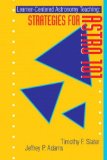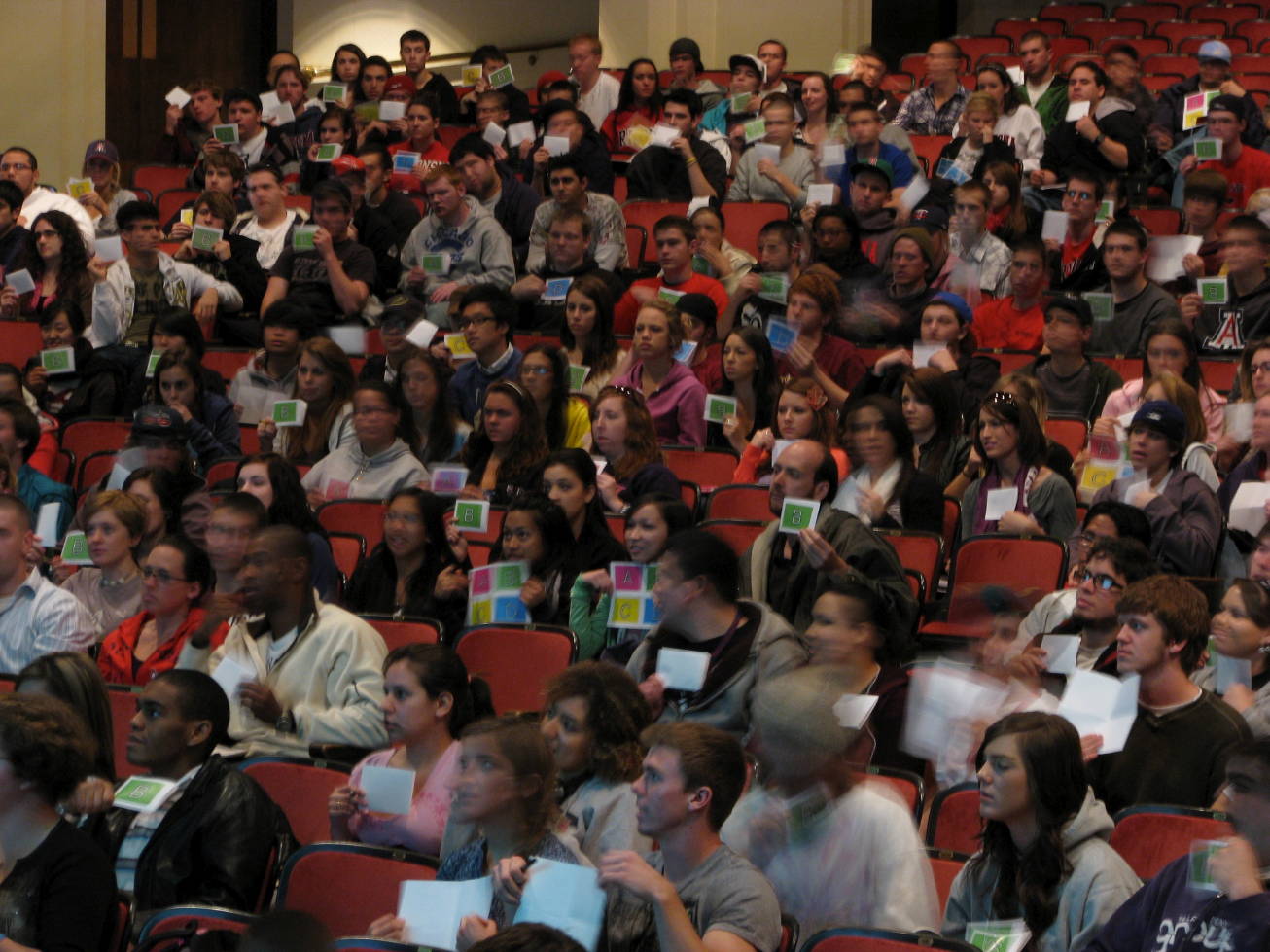In the Fall, I’ll be teaching Introduction to Astronomy to ~350 non-science majors, the course Astronomers affectionately call Astro 101 regardless of its actual course number at our school. Lucky for me, and for many of you, there is a wealth of education research that has demonstrated which teaching techniques work best for actually improving the typical non-science major’s understanding of the Universe. Now, what’s way better than just the mere existence of the research and its results, are workshops and books that spell out these best practices for you, the instructor, to implement to maximize the your class’ learning potential.
At the 216th AAS Meeting in Miami, I attended the Center for Astronomy Education (CAE) two-day introductory Teaching Excellence Workshop. After an intense weekend, I feel like I now have the tools and knowledge to hit the ground running on my journey towards becoming an effective teacher. There was not a burning question that I could throw at the workshop facilitators without getting a thorough and well-reasoned response based not only on vast experience, but also on actual data!
Since I can’t possibly communicate in this post what I learned during a 16-hour workshop, I am instead going to try to motivate you to attend the workshop by teasing you with some of the things I learned:
- How important it is to understand that my students have a vastly different relationship with math and science than I do,
- What “interactive learning” means and how effective it is,
- How to engage a large lecture hall in interactive learning (aka learner-centered) education,
- How to effectively implement Think-Pair-Share in a large lecture hall,
- Interactive leaning has successfully been implemented with a class size as large as 1200 students,
- Voting cards, as illustrated in the above classroom image, are more effective than than clickers,
- How to kick-out disruptive students from the lecture hall,
- It’s okay for my class to be rated PG-13, (In other words, it’s okay for me to curse.)
- It’s okay to eliminate “plug and chug” arithmetic from my class.
 A great complement to the workshop is this book: Learner-Centered Astronomy Teaching: Strategies for ASTRO 101. It discusses many of the leaner-centered concepts that are also covered in the workshop. While reading it on the plane back home from Miami, I found it to be an excellent reinforcement tool for everything I had just learned and I expect to be referring back to it as I prepare my course.
A great complement to the workshop is this book: Learner-Centered Astronomy Teaching: Strategies for ASTRO 101. It discusses many of the leaner-centered concepts that are also covered in the workshop. While reading it on the plane back home from Miami, I found it to be an excellent reinforcement tool for everything I had just learned and I expect to be referring back to it as I prepare my course.
The bottom line is that I can’t recommend the CAE Teaching Excellence Workshops highly enough for anyone who has been entrusted with the task of teaching Astronomy to our undergraduate population! There are several Tier 1 introductory workshops coming up, including at the Seattle AAS in January. There is also a big five-day event that includes workshops, meetings, and plenary talks in Boulder in late-July called Cosmos in the Classroom.

Kelle, thanks for posting about this! I’ve never actually been to one of Ed and Gina’s workshops, but having TA-ed for them for the last two spring semesters, I can’t recommend them more highly!
I know a lot of people who might scoff at the points in the bullet list above (no one who would be reading this blog, though, right?) by not full-appreciating the meaning of each of them…but actually seeing these things happening, well-implemented, in the classroom is nothing short of AMAZING compared to a lecture-heavy class. It does take a lot of deliberate thought, discussion with experienced practitioners, and LOTS of practice to get this stuff to work right, but it is so, so worth the effort. Accuse me of drinking the kool-aid if you will, but don’t knock it until you’ve really tried it, cause the people who’ve mastered that kung fu (and even those who are just beginning to study it) have students that totally kick ass compared to students that were mostly just lectured at.
The CAE is working on a series of short (~3-5 min) videos using examples from Ed’s classroom last spring, going over some of the things that are covered in the workshops. These obviously won’t be a substitute for the workshops, but they’ll be a great supplement for those who have, or just great in their own right. Watch http://astronomy101.jpl.nasa.gov/ for updates!
(also, that photo is courtesy of me 😛 )
Caption updated.
I recommend you also seek insight from instructors at Swinburne University’s Astronomy Online program. Now ten years old, this online masters of science program is geared toward a wide range of people, including those with little science or math background, who are interested in pursuing degrees and possibly careers in astronomy. Many students are people coming back to school long after college–not the traditional 18-22-year-olds. The classes have students from countries around the world with widely varying science backgrounds. I’m a writer, more the verbal than math type, and decided I want to write about astronomy and possibly research KBOs, so I applied to Swinburne. It is an absolutely wonderful program. We have access to professional astronomy journals and great resources without even having to leave our homes.